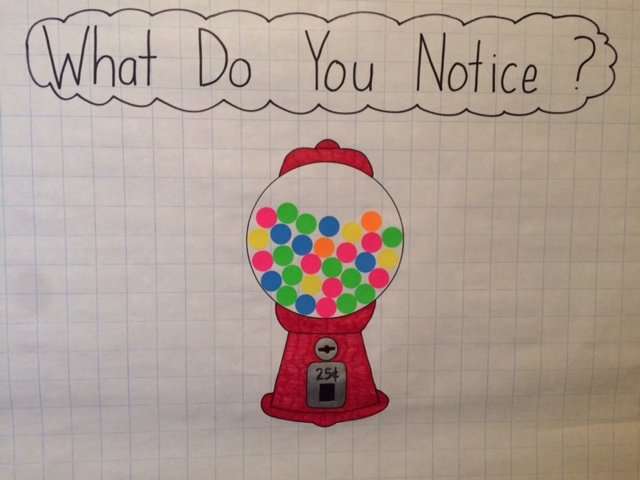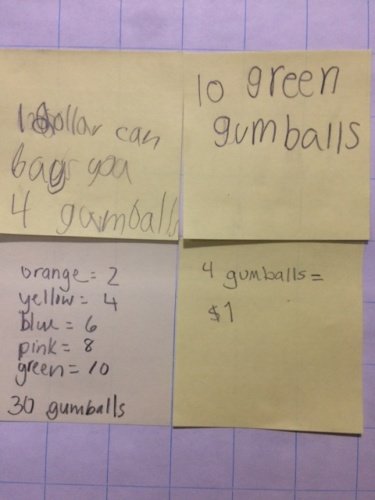
Primary students (K-2): counting, even numbers, skip counting by twos, comparison
Intermediate students (3-5): probability, fractions, money
This is a fun one simply because of the fun gumballs and gumball machine. That said, there is still a lot of math going on. Young students can count the number of different colored gumballs. They can compare colored gumballs to see which color has the least and which color has the most. They can even count all the gumballs to arrive at a total.
If they’re really paying attention, they’ll notice that each color is represented by an even number of gumballs. And they may even figure out a pattern to determine the total number of gumballs (although, admittedly, this may be a little difficult without some guidance):


"One dollar can buy you 4 gumballs"
"10 green gumballs"
"Orange=2, yellow=4, blue=6, pink=8, green=10, 30 gumballs"
"4 gumballs = $1"